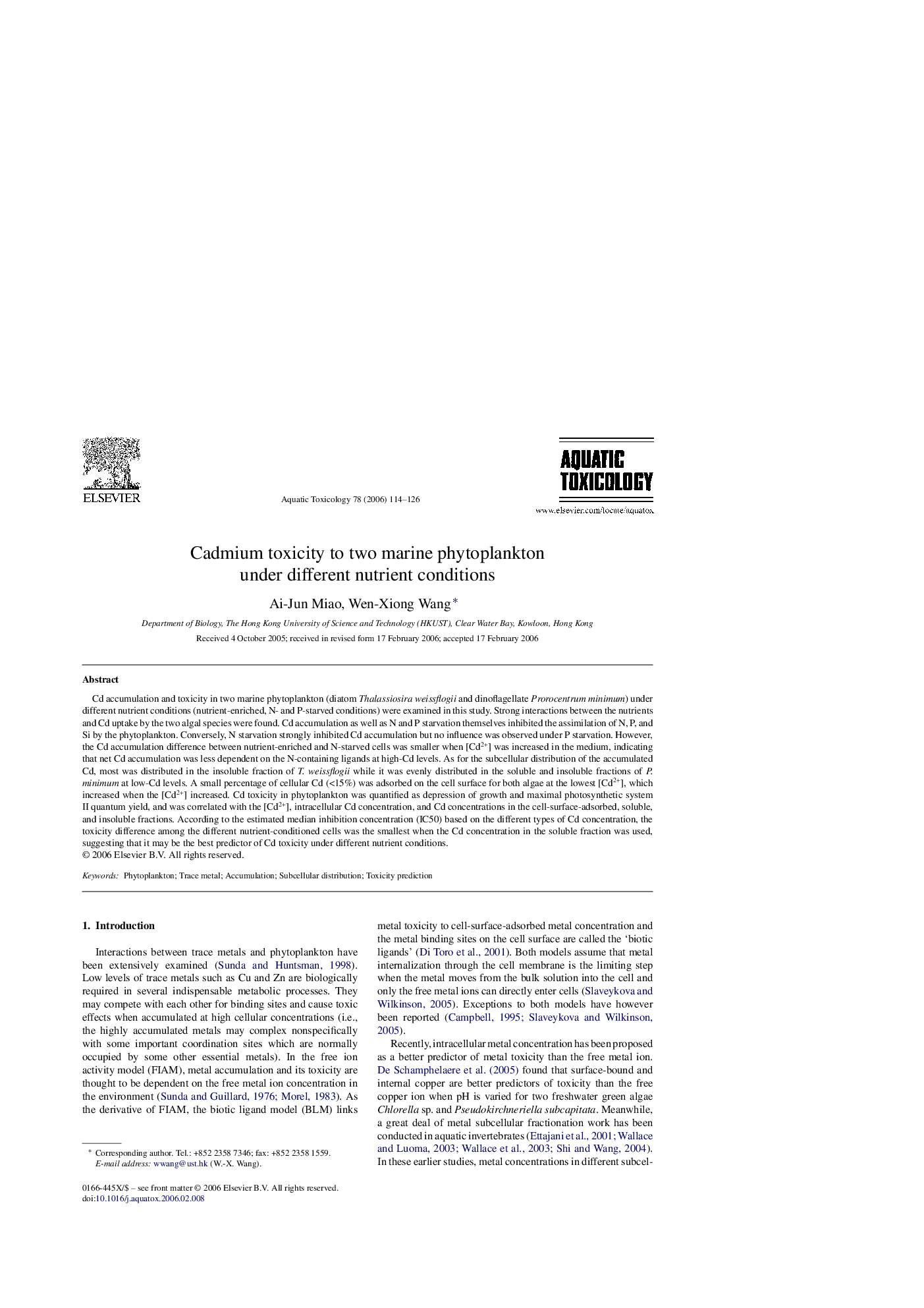| Article ID | Journal | Published Year | Pages | File Type |
|---|---|---|---|---|
| 4531275 | Aquatic Toxicology | 2006 | 13 Pages |
Cd accumulation and toxicity in two marine phytoplankton (diatom Thalassiosira weissflogii and dinoflagellate Prorocentrum minimum) under different nutrient conditions (nutrient-enriched, N- and P-starved conditions) were examined in this study. Strong interactions between the nutrients and Cd uptake by the two algal species were found. Cd accumulation as well as N and P starvation themselves inhibited the assimilation of N, P, and Si by the phytoplankton. Conversely, N starvation strongly inhibited Cd accumulation but no influence was observed under P starvation. However, the Cd accumulation difference between nutrient-enriched and N-starved cells was smaller when [Cd2+] was increased in the medium, indicating that net Cd accumulation was less dependent on the N-containing ligands at high-Cd levels. As for the subcellular distribution of the accumulated Cd, most was distributed in the insoluble fraction of T. weissflogii while it was evenly distributed in the soluble and insoluble fractions of P. minimum at low-Cd levels. A small percentage of cellular Cd (<15%) was adsorbed on the cell surface for both algae at the lowest [Cd2+], which increased when the [Cd2+] increased. Cd toxicity in phytoplankton was quantified as depression of growth and maximal photosynthetic system II quantum yield, and was correlated with the [Cd2+], intracellular Cd concentration, and Cd concentrations in the cell-surface-adsorbed, soluble, and insoluble fractions. According to the estimated median inhibition concentration (IC50) based on the different types of Cd concentration, the toxicity difference among the different nutrient-conditioned cells was the smallest when the Cd concentration in the soluble fraction was used, suggesting that it may be the best predictor of Cd toxicity under different nutrient conditions.
